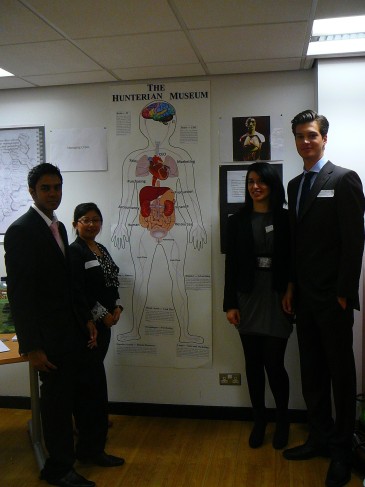In June 2010, City University Careers Service contributed to a conference which included presentations by myself (visiting lecturer at Cass Business School) and PWC’s recruitment team. I asked PWC what were the two major areas where graduates from UK universities fell most short of employer’s needs. The answer from PWC was direct: self-awareness and reflection skills. When I reported this back to Cass undergraduate Dean, Ann Brown, a proposal resulted for a new module was fast-tracked with a view to piloting it as a first year elective in January to March 2011 to the BSc Management. The proposal to the committee approving new courses suggested calling the module “The Reflective Manager”, but the committee had taken the view that it was not realistic to expect first years to become managers just yet, so the final title agreed became “The Reflective Practitioner”.
Due to involvement in existing reflective practice activities at Cass, I was appointed as the module leader. The idea was to take the most relevant aspects already developed, add new material to meet the very different needs of first year students, and organise it into a holistic package. Physical and logistical demands capped the cohort at about 20 students, and all the places were taken up when the module began in January.
I knew that even students volunteering for an elective would not necessarily have any experience of reflective practice, and might be apprehensive about it. So a first design decision was to bring in a visiting business people for most weeks of the module who would talk about their own self-awareness and reflective practice, and hence underpin the initial logic of the module, namely that these were areas of vital importance to employers and to successful executives. Two weeks of the module involved visits, to the Cabinet War Rooms and to the London Metropolitan Archive respectively. Students were assigned tasks entirely related to management, involving “noticing”, close observation, and imaginative oral presentations. These visits helped make the module distinctive and were well received by the students.
Secondly, the Business School had been working over more than five years with reflective journals in a variety of forms, most typically A5 artists’ sketchbooks. Some management students said they felt daunted by the blank pages, so in 2010, an experiment took place with “partly printed” journals. The experiment was successful, so a refinement of this approach was then built into the Reflective Manager module.
The third element consisted of weekly exercises which developed reflective and awareness skills, most typically involving the visiting speaker in some way. There was also time set aside in most weeks to carry out immediate reflections in the journals in class time class, which helped some of the more hesitant students to overcome their block in being “journal novices”.
The fourth and final element was to conclude the module with a public exhibition of student work. There was very extensive documentation of the whole module via photographs. The exhibition planning was entirely the responsibility of the students, and time was set aside in the second half of the module to plan and implement the ideas for the exhibition. I built on considerable experience at Cass of student exhibitions. The whole experience of converting individual reflections and awareness into both individual and collective artefacts to exhibit to visitors was challenging. But the students rose to the challenge, there were many visitors, including from business and the feedback from students was incredibly positive.
One effect of the preparation for the exhibition is that students individually and as a team achieved a second level of integration of thinking, above and beyond their detailed individual reflections and the weekly exercises. For example, they produced very powerful collages constructed from vast pile of photographs printed out as a resource for the exhibition. The artefacts in the exhibition though proposed by pairs of students were voted on by the entire group, leading to a strong sense of ownership to the exhibition by the student group as a whole. This was confirmed as each student was assigned to host one or more visitors, and they showed remarkable assurance in explaining every artefact being exhibited, or the whole journey of the class through the term.
There was overall positive feedback from the student group, but with one note of caution. They felt quite strongly that the module should remain as an elective, as there was a belief that some “left-brain” students might not engage well with a compulsory module, and indeed might undermine it.
As it happens, the course team had separate concerns about just how scalable the module was. In particular the visits were really only feasible for groups of up to 24 at a time. During 2011 the BSc Business Studies was being revamped and it was decided to run the elective identically a second time, in parallel with the BSc Management elective.
This arrangement worked well, not least as the students themselves decided to join forces across the two cohorts and jointly organise the final exhibition. The external visits were again to the London Metropolitan Archive, but also to a new location, the Hunterian Museum, which charts the history of medicine. Once again, students were given investigatory tasks which entirely related to the art and science of management rather than of medicine. So this has run successfully over two academic years and now over two degree courses, needing only very minimal adjustment in the second year.
A final lesson: Reflective Practice can be stimulated by subject specific curriculum which builds on generic insights and activities.
Image: students at the final exhibition infront of a poster of a business organisation imagined as a human body. Designed by BSc Business Studies students Nitu Rai and Rita Albu, in response to the session at The Hunterian Museum.


I was at the exhibition and loved the work being done. Well done to all involved!